Theresa Smith's Blog, page 154
October 9, 2017
An Early Look at The Secrets at Ocean’s Edge by Kali Napier
About:
1932. Ernie and Lily Hass, and their daughter, Girlie, have lost almost everything in the Depression; all they have keeping their small family together are their secrets. Abandoning their failing wheat farm and small-town gossip, they make a new start on the west coast of Australia where they begin to build a summer guesthouse. But forming new alliances with the locals isn’t easy.
Into the Hasses’ new life wanders Lily’s shell-shocked brother, Tommy, after three harrowing years on the road following his incarceration. Tommy is seeking answers that will cut to the heart of who Ernie, Lily, and Girlie really are.
Inspired by the author’s own family history, The Secrets at Ocean’s Edge is a haunting, memorable and moving tale of one family’s search for belonging. Kali Napier breathes a fever-pitch intensity into the story of these emotionally fragile characters as their secrets are revealed with tragic consequences.
[image error]
My Thoughts:
My thoughts on The Secrets at Ocean’s Edge are technically on hold until its release date in early 2018, but I can say this much:
Kali Napier may be a debut author but she is certainly no novice. The Secret’s at Ocean’s Edge is an incredible novel, a story layered with all of the hallmarks that make for an Australian classic.
Thanks is extended to Hachette Australia for providing me with an advance copy of The Secrets of Ocean’s Edge for review. I’d like to especially thank Kali Napier for putting me forward as an early reviewer of her novel. I’m so looking forward to sharing my full review closer to the release date. In the meantime, I encourage all of you to pre-order this exquisite novel.
The Secrets at Ocean’s Edge will be released on January 30th, 2018.
The Secrets at Ocean’s Edge is book 63 in my 2017 Australian Women Writers Challenge. Kali Napier is a great supporter of the challenge and it gives me great pleasure to be able to pay that support forward to her.
[image error]
About Kali Napier:
Kali Napier worked in Bangladesh as an anthropologist on gender programs before working as an Aboriginal family history researcher for the Queensland government and as a Native Title anthropologist in the mid-west of Western Australia, the setting for The Secrets at Ocean’s Edge. The novel was longlisted for the Bath Novel Award, as was her first manuscript – also a finalist in the Hachette Australia Manuscript Development Program. Kali is currently an MPhil candidate in creative writing at the University of Queensland. The character of Ernie in The Secrets at Ocean’s Edge is based on her great-grandfather, who settled briefly in Dongara during the Depression. Kali now lives in Queensland with her two children.
[image error]
To follow Kali’s news, check in with her at the following places:
https://kalinapier.wordpress.com
Facebook @KaliNapierAuthor
Twitter @KaliNapier
The Bath Novel Award is open to unpublished writers from across the world. First prize is £2,000. The winner and shortlisted writers get introductions to literary agents. It’s open to novels of every genre, for adult or young adult (13+) readers.


October 8, 2017
Origin of the Writer: Wendy Lee Davies
Origin of the Writer is a series of essays giving emerging writers the opportunity to share their writing journey so far.
My Journey with The Drover’s Rest
[image error]
Wendy Lee Davies
I’ve been writing this story forever. Three years? Maybe more.
It started when I was looking for something creative to take my mind off an uncertain future. Writers Victoria advertised a course – Romancing the Page – and I thought why not?
At the first session I had to introduce myself and say what the book I was writing was about. I didn’t have a book! I didn’t even have an idea for a book!! So, I was sitting there, heart palpitating, hands sweaty, until it was my turn. “My book,” I told everyone, “is about a city girl who inherits a hotel in the country and falls in love with a sheep farmer.”
Lame. But, The Drover’s Rest was born.
I had no idea what I was doing. I had to get my head around how romances were structured and, more importantly, how to write a kissing scene without (1) blushing, (2) sounding like a king-sized idiot, and (3) making it real, but romantic too!
Then another opportunity came along. A Manuscript Development Program with Hachette Australia and the Queensland Writers Centre. Without any high expectations I entered the first 20 pages of my unfinished story, knowing full well that I needed a finished manuscript. So, when I got the phone call telling me I had a place in the Program, I knew I was in trouble. I spent practically the next 48 hours madly writing so I could send off a completed story by the deadline. (I would NOT recommend this. To anyone.)
That Manuscript Development Program was wonderful. It turbo-charged my writing to another level. Yes, my story still needed a lot of work. Yes, I was intimated by the other participants – they all seemed so much more accomplished, especially as I was the only romance writer in a group of literary fiction writers.
It was also an experience that enthused and energised me enough to rewrite the entire story. After a year of ill-health – I broke my right ankle and then had a total hip replacement on my left hip – I finally finished. Four wonderful beta readers read and critiqued my updated story before I resubmitted it to Hachette.
It was rejected.
I was so depressed I didn’t even touch it for months and months. Then, one day I re-read it. You know, it wasn’t that bad. Sure, more could be done. A scene cut here. A few snips there, and it would be even better. Maybe. So, I “fixed” it up. Again.
I entered my rewritten, revamped manuscript into the Romance Writers of Australia’s (RWA) Emerald Award for unpublished manuscripts. It promised feedback from romance readers on how marketable my story was, something I craved. This time, though, I had a finished manuscript, written to the best I could make it, before sending off the first 10,000 words.
I was gobsmacked when I made it into the second round. Yes! Another three reader judges’ opinions – this time on the full manuscript. Bonus. Big time.
In the meantime, I undertook some online writing courses, learning lots. About developing characters. About branding myself as an author. And finally, in time for the RWA conference, about pitching, something that terrified me, but a skill I really needed to hone.
I had to read the email telling me I was a finalist in the Emerald Award like a hundred times before it finally sank in that my story had made it into the top three places!!
How on earth did that happen?
Two days later my story was rejected again, by an agent, who said that the conflict was not as strong as it could have been and the instant attraction between the two characters was “too instantaneous to be completely believable”.
Oh, the highs and lows of being a writer.
After that, I received another two rejections and one request for the full manuscript from agents and publishers.
Getting to be a finalist was such an honour in and of itself, coming third would have been fine. I was half-way out of my seat when they announced the third place at the conference dinner, that’s how much I expected it would be me. It wasn’t. And when they announced the second place, I couldn’t move. It wasn’t me either. I won! I’d won the Emerald Award!!
[image error]
While at the RWA Conference, I pitched my story to a large Australian publisher, who asked for the full manuscript. So, after reading through my story once more, I sent it off.
Less than one month later I received an email containing a five-point, detailed critique of my story from the Australian publisher. It wasn’t negative. Not at all. They were clear about what needed improving before it would be of “publishable standard”. My heroine needs to solve her own problems. My hero and heroine need more time on the page, together. The reasons why they can’t be together needs to be much clearer. If I do all that, they’ll be happy to re-read it.
Five days later, I received a publishing contract from a small American publisher. If I don’t respond within 15 days, they’ll take that as a no. That was 9 days ago.
So, do I rewrite my story? Or, do I sign the contract already offered? Or give up completely?
Which of these options is right for The Drover’s Rest?
I could take months rewriting, fixing the inherent problems without any guarantee that anyone will publish my story.
If I take the publishing contract, they may not do the right thing by my story (or me). And I’ll probably have to rewrite it anyway.
I’m not a perfectionist. But my natural habitat, writing wise, is editing. So, what should I do?
Begin rewriting my story yet again of course.
Seems I have more to learn and experience with The Drover’s Rest. Seems I’m finding it very difficult indeed to walk away, letting it go, without even trying to improve it.
Who knows what will happen next?
Wendy Lee Davies
Contemporary Country Romance
Love finds you wherever you are
http://www.wendyleedavies.com
[image error]
Additional Information
My pitch:
The Drover’s Rest is a contemporary rural romance of 89,000 words.
When Amber Hutchinson inherits a country hotel, all she wants is to do it up, sell it, and move on. But her first night in Willow’s Bend doesn’t go well. She gets stuck breaking into a window. And a handsome sheep farmer rescues her. He ‘s everything she thought a cowboy knight would look like, right down to that Akubra on his head.
Zach Wentworth has no time for city-slickers like Amber. He has no illusions that she’ll survive in his home town. She can’t. But when he discovers she’ll be running the only hotel in town, he decides to give her a chance. And his attraction to the determined blond bombshell has nothing to do with that decision. None at all.
A few questions – answered
So, has winning the Emerald Award made me a better writer?
No, but getting the reader-judges feedback was priceless.
Has winning got me a publishing deal?
No, not yet. Has winning changed my life? No. Yes. Sort-of.
Would I encourage others to enter competitions?
Depends. Are they looking for the feedback, the opinions of others or is winning the end game? Think hard. Be prepared to get all sorts of conflicting opinions on your writing. If you can cope with that, are ready for that, then go ahead and enter. You’ll be a better writer because of it. Hopefully.


October 7, 2017
Opinion Matters: Comparison Marketing of Books
How many times have we seen this type of marketing for books? And yes, I’m guilty of doing it myself in reviews. Just recently I told readers if they liked Big Little Lies then they would love The Mummy Bloggers. Shame on me for treating readers as unintelligent robots incapable of reading a blurb and forming an opinion. But I’m not really wanting to focus on bloggers and reviewers when talking about this tendency. We do what we can to review books non-stop without sounding repetitive and sometimes comparisons just slip out.


It’s the marketing on the books themselves that I want to address. What’s on the covers and media ads we see splashed around. Because while comparison marketing can be a very powerful persuader, this isn’t always necessarily a good thing. What if, for example, you hated the comparison title being quoted? This very notion came to my attention recently with a glaring example of a comparison gone wrong. A blogger who I follow and have a lot of respect for indicated she was reluctant to read The Dry by Jane Harper because she had seen it being marketed to fans of Girl on the Train, which frankly, she hated. I’m with her there! But I loved The Dry and apart from both of these novels containing a twist at the end, this comparison is a bit slim to be honest. But accuracy of the comparison aside, let’s get back to the real point, which of course is this:
If you hated Girl on the Train, how likely are you to pick up The Dry if this was written on the cover:
If you liked Girl on the Train you’ll love The Dry.
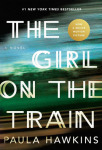

Pass. And then miss out on a terrific read. This is but one example. There are countless others. One could argue that the scales are tipped towards this leading to more sales not less. Publishers know which of their books have sold well and therefore use these ones as comparison titles, making the assumption that if one hundred thousand people thought the book was good then it’s a sure bet to compare to and the one hundred that didn’t can just mosey on off and find something else to read.
Well, in an effort to do my bit, I pledge to do the following:
Cease making comparisons in my reviews. I don’t do it much but the fact that I can reel off an example with ease makes me uncomfortable enough to feel like I’m a contributor to this marketing tendency.
Never judge a book by its comparison quote. It’s a load of rubbish anyway, an obvious marketing ploy and I will not fall victim to it – in a positive or negative way.
So what do think about comparison quotes? Do you use them as a guide, regard them with a grain of salt, or ignore them completely?


October 6, 2017
Cover Reveal: The Memories that Make Us by Vanessa Carnevale
Did you love The Florentine Bridge by Melbourne author, Vanessa Carnevale? I certainly did, so I am thrilled to be now showing off the cover and sharing the blurb for Vanessa’s next novel, The Memories That Make Us, due for release in March 2018.
[image error]
Isn’t this an absolutely stunning cover?! Just beautiful!
And the inside of the book promises to be just as gorgeous as the outside packaging:
‘A warm, hopeful and uniquely Australian read that reminds you what is important in life.’ Sally Hepworth, bestselling author of The Secrets of Midwives.
The Memories That Make Us…
Dear Gracie,
Here are some things you should know:
The yellow toothbrush is mine.
You sleep with your socks on.
You set your alarm for 5:45 am every morning and then you go for a run.
You and I were the closest thing to perfect I ever knew in my life.
Love,
Blake
Gracie Ashcroft is supposed to marry Blake Beaumont in three months’ time. The trouble is, she doesn’t know who he is…
After an accident leaves Gracie with severe amnesia, she’s forced to decide: live a life that is made up of other people’s memories of who she was, or start a new life on her own. Leaving her fiancé Blake behind, she moves to the country where she takes on the task of reviving her family’s abandoned flower farm.
While attempting to restart a business with an uncertain future, she tries to come to terms with the grief of losing a mother she can’t remember and a fiancé she so badly wants to fall in love with again. What she doesn’t count on is developing a deep connection with Flynn, a local vet. Worst of all is having to confront the fact that she might lose either chance at love.
Forced to examine the person she has become, Gracie confronts the question: if you had your time over, would you live the same life twice?
‘This book is set on a fictional flower farm in one of my favourite places in Australia — Daylesford, Victoria. It’s a story of self-discovery, fate, and the power of choices, that speaks to the question, if you had your time over, would you live the same life twice? I’ve always been fascinated by the role our memories play in our lives, and anyone that follows me on Instagram knows I adore flowers, so this book merges these two themes. I really hope you love it.’ Vanessa Carnevale.
The Memories That Make Us is available for pre-order now from the following retailers:


October 5, 2017
My Reading Life: Jane Austen
Welcome to My Reading Life, a series where I revisit the authors and novels that have shaped me into the reader I am today.
When I was in my 20s, there seemed to be a resurgence of the works of Jane Austen, beginning with that timeless BBC adaptation of Pride and Prejudice (1995), starring the very perfect Colin Firth as Mr Darcy. Around the same time, Emma Thompson, Kate Winslet, Alan Rickman and Hugh Grant all appeared in the very beautiful Sense and Sensibility (1995). This was followed by two delightful adaptations of Emma in 1996, one starring Gwenyth Paltrow and Toni Collette with the other starring Kate Beckinsale. From the release of these adaptations, my passion for Jane Austen was born, however, not because I watched before I read. Rather, the film tie-in versions of the novels started popping up everywhere, and I’ve always been a sucker for a film tie-in; many a time have I bought a novel with a film tie-in cover when I possibly wouldn’t have looked at it otherwise. So I bought Pride and Prejudice, Sense and Sensibility and then by the time Emma came out with its new cover graced by Gwenyth Paltrow, I was hooked on Austen well and truly, tuning into the ABC each Sunday night for the next instalment of Pride and Prejudice – no binge TV back in those days! Of course, I never went to the cinema to see Sense and Sensibility or Emma, opting instead to hire them on VCR (ha! anyone else remember $6 a night new release, $10 for two movies?!) as that fitted my student budget much better and allowed me time in-between uni assignments to savour the novels first.
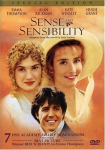

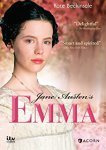
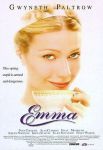
I went on to read every novel written by Jane Austen in rapid succession along with any other information about her that I could get my hands on, which was no small task given that smart phones and tablets were not yet invented and the internet still came with a dial tone and a twenty minute wait time on connection. But I loved her heroines, with their steadfast desire to be true to themselves, to marry for love rather than status; and they were always uncommonly smart, big readers and consequently far too intelligent and imaginative for most of their peers or siblings, ‘surprising their unlikely suitors’. Since these early days, I’ve watched many other adaptations of Jane Austen’s novels, particularly enjoying Mansfield Park and Northanger Abbey, not her most popular novels, but still bearing her trademark wit and irony. Earlier this year I got to experience Jane Austen’s novella Lady Susan, via the 2016 adaptation Love and Friendship starring Kate Beckinsale in the leading role, and what a wicked delight it was! Snarky humour with a sheen of impoverished glamour; such an entertaining film that has been reviewed as a faithful interpretation of the original Lady Susan story.

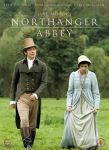
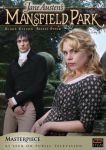
Jane Austen’s six novels were published over a period from 1811 through to 1818, two hundred years ago now, yet the narrative remains accessible and enjoyable, a testimony to Jane’s skill at writing entertaining novels. The social realism that Jane played out in the drawing rooms of the English middle and upper classes seems to have a timeless appeal, the notions of love versus family obligation still relevant today. But if I were to be completely honest, the reason I love reading Jane Austen is because her novels are truly delightful. She writes with a wit and irony I admire greatly, her satirical projection of the social mores of the day providing many laughable moments. Her words are transparent and heartfelt; I don’t need to search her prose for hidden meaning, it’s all beautifully laid out for me to enjoy. I’ll never tire of reading my Jane Austen novels. They’re as comforting to me as a cup of hot tea at the end of a long day. Likewise with my Jane Austen adaptations (now on DVD instead of VCR – moving with the times, of course), if I’m ever feeling unwell, one of those is sure to alleviate some of my suffering and provide some much-needed comfort.




And despite the fact that it’s her most popular work, my favourite is Pride and Prejudice, both to read and watch – the Colin Firth BBC mini-series version of course! – the outrageous Bennet family gets me every time, and then there’s Mr Darcy, always Mr Darcy. This is followed closely by Sense and Sensibility on account of the lovely sister relationship at the heart of that story. Jane Austen is an author I expect I would’ve liked immensely if I’d had a chance to meet her, but alas, 160 years separates her death from my birth.
“For what do we live, but to make sport for our neighbours, and laugh at them in our turn?”
– Pride and Prejudice.


Covers depicted in this article form part of the Penguin Classics Hardcover Series currently available from all book retailers, both local and online.


October 4, 2017
Queensland Literary Awards 2017 Fiction Winner: The Birdman’s Wife by Melissa Ashley
The Queensland Literary Awards ceremony was hosted by the State Library of Queensland on 4 October.
I am absolutely thrilled that Melissa Ashley has been awarded The University of Queensland Fiction Book Award for her novel The Birdman’s Wife, published by Affirm Press. So well deserved!
[image error]
[image error]
About The Birdman’s Wife:
Inspired by a letter found tucked inside her famous husband’s papers, The Birdman’s Wife imagines the fascinating inner life of Elizabeth Gould, who was so much more than just the woman behind the man.
Elizabeth was a woman ahead of her time, juggling the demands of her artistic life with her roles as wife, lover and helpmate to a passionate and demanding genius, and as a devoted mother who gave birth to eight children. In a society obsessed with natural history and the discovery of new species, the birdman’s wife was at its glittering epicentre. Her artistry breathed life into hundreds of exotic finds, from her husband’s celebrated collections to Charles Darwin’s famous Galapagos finches.
Fired by Darwin’s discoveries, in 1838 Elizabeth defied convention by joining John on a trailblazing expedition to the untamed wilderness of Van Diemen’s Land and New South Wales to collect and illustrate Australia’s ‘curious’ birdlife.
From a naïve and uncertain young girl to a bold adventurer determined to find her own voice and place in the world, The Birdman’s Wife paints an indelible portrait of an extraordinary woman overlooked by history, until now.
[image error]
To read the full list of 2017 winners, visit Queensland Literary Awards, Winners and Finalists.


October 3, 2017
Behind the Pen with Sarah Ridout
It gives me great pleasure to welcome a favourite of mine to Behind the Pen today, Sarah Ridout, author of the beautifully mysterious novel, Le Chateau. She’s here to share some of her favourites and I’m delighted that she could join us. Thank you for dropping in Sarah!
[image error]
What is your favourite…and why…
Character from one of your books?
That’s a hard one. I get attached to my characters! From ‘Le Chateau’ although I loved Charlotte (and related to and identified with her) Henri was my favourite. This was largely because he initially scared me: writing a male character. Readers tell me they loved him so I must have pulled it off. That’s great feedback for a writer to receive.
Scene from one of your books?
Like the previous answer, a counter intuitive one: the sex scenes also because they scared me and I put them off for ages. I wrote that part of the book in Dublin and I remember getting myself a big glass of a light French red and cranking up the mood music and letting rip. The first draft barely changed. I’m not scared of sex scenes now and would follow the same approach. A universal comment I have received from readers is that the book is very ‘sexy’ and ‘life affirming’.
[image error]
Original Cover of Le Chateau
Movie of all time?
Sorry, but I majored in Film theory and production as an undergrad, and even won the Queensland Young Filmmakers Award, so I cannot name just one film!! There are different directors, genres, eras styles I love. If I had to name four directors they would be Alfred Hitchcock, Jean Luc Godard, and from modern cinema, Jane Campion and Ang Lee.
Book that you always keep a copy of and recommend to others?
Wow as above – too many. It depends on mood, age and what’s happening in the world. But I would recommend ‘The Catcher In the Rye’ to every teenager. So that’s as close as I can get!
Fashion accessory that despite having plenty of, you still keep collecting?
These questions are revealing me to be a hoarder and appreciator of beauty. Silk scarves, costume jewelry by YSL, French handbags, and decadent dresses that suit an earlier lifestyle! I lived in France for eight years so I have the French respect of quality ingrained now.
Drink that you enjoy everyday?
Coffee, more and more, essential for writing kick starts. It’s taken over from red wine and champagne– quelle horreur!
Treat you indulge in?
Reading and listening to podcasts. Massages as often as I can fit them in, writers have to look after their bodies I have learnt this the painful way … shoulder problems anyone?
Place to be?
I’ve lived in four countries and travelled extensively so that’s another impossible one. For culture and ambience: Paris and Venice. For uniqueness (for now): Havana. For spirituality and timelessness: Kakadu and Uluru. For peace: Stradbroke where part of my next book is set.
Person you admire?
I admire so many. Right now with the world we’re in: Angela Merkel. I don’t envy her being the sane one around all those Privileged White Males.
Season of the year?
That’s changed as the world has. When I was a child in Brisbane it was summer, now it’s autumn and winter. Brisbane is getting unlivable now in summer. It’s like Singapore: people who can afford it live in air-conditioning 24/7. It’s really sad. I can’t believe Australian governments continue to ignore the elephant in the room, Climate Change. They’ve had more than 30 years, seriously. They need to act so our children have habitable lives when we’re gone. Call your local reps / politicians of every tier of Government (Local, State, Federal), the companies you hold shares in, your Super Fund: say you’re mad as hell and won’t take it anymore! They must act responsibly. Do it for your kids / grandkids!
[image error]
About Le Chateau:
What really happened at the chateau?
When Charlotte regains consciousness after an accident, she finds herself living a stranger’s life. The previous five years are a blank, and her husband, Henri, and daughter, Ada, are strangers. Arriving at their family chateau in southern France, she hopes to regain her memories. Instead she feels isolated and unsettled. Strange events hint at underlying darkness and menace. Charlotte doesn’t know who to trust.
Did she really have an affair with their charming Irish neighbour, as her enigmatic mother-in-law suggests? And what of Henri? He seems loving and kind, a good parent, but Charlotte is wary. Then there is Ada, a little girl who just wants her mother back.
With the help of her friend and fellow Australian Susannah, Charlotte starts to piece together events, but her newfound confidence is shaken with news that puts a deadline on her quest…
Le Chateau is a suspenseful gothic tale that will appeal to readers of Daphne du Maurier and Kate Morton.
Read my review of Le Chateau here.


October 1, 2017
New Release Book Review: Drawing Sybylla by Odette Kelada
About:
Winner of the 2016 Dorothy Hewett Award for an unpublished manuscript, Drawing Sybylla is a novel about the challenges women writers have faced in pursuing the writing life.
On stage, a woman named Sybil Jones is making a speech. She is talking about the significance of Charlotte Perkins Gilman’s short story ‘The Yellow Wallpaper’. Behind her sits a panel of writers, facing their audience, and one writer drawing Sybil’s likeness in a contemplative daze. The Sybil in the writer’s drawing starts to move, like the women behind Gilman’s wallpaper. She shakes. She takes the writer by the hand and leads her down into the paper, into the dark recesses of her mind, and into Australia’s past. Into the real and imagined lives of Australia’s women writers.
Each woman is seemingly trapped, in different ways, by their gender and circumstance. Inspired by the seminal feminist short story, ‘The Yellow Wallpaper’, as well as the works of Virginia Woolf, the interconnected stories are woven together through the poetic figure of a muse.
Drawing Sybylla is a novel inspired by author Odette Kelada’s extensive academic research into the lives of Australian women writers over the past 100 years. It prompts us to consider the challenges women have faced in the pursuit of a creative life, what drives them to keep creating despite the difficulties, and to question how much has changed for women writers today.
“This is a work that wears its significant research very lightly and provides the reader with a tremendously original and imaginative set of pictures about the ideas of creativity and using language to make stories, over and again.” The 2016 Dorothy Hewett Award judges’ report.
[image error]
My Thoughts:
“If a man wants to write a book, he goes out and buys a computer, considers relocating to New York. A woman goes out and takes classes, comes to listen to us lot rattle on. A lot of us writers teach more than we write. Got to eat. Got to feed our own babies.”
This insightful quote, from early on in the novel, sums up Drawing Sybylla quite well, to my mind. As women, we are never able to just immerse ourselves in our careers, our hobbies, our dreams. Everything must be balanced, all of the needs of others met first, and then, maybe once all of these other things are done, may we sit down and indulge in our own personal interests, focus on our own personal advancement; a common theme for the women in Drawing Sybylla, who all wrote in the dead of the night or early morning hours, fitting their writing around all of their other obligations, sacrificing their own rest in order to ensure their families were not in any way put out by their indulgence. History that is all too familiar.
Drawing Sybylla is a study of Australian women writers throughout the 20th century, an historical peek at times long past, presented in a very unique and imaginative way. Through the eyes of a writer that has been pulled down into the paper she was doodling on by a muse – Sybylla – we see the challenges that have come hand in hand with being a woman who writes. From being taken seriously and constantly dismissed through to juggling motherhood and a household with writing, Drawing Sybylla examines what it was (and is) to be a woman who writes by choosing five women writers from five periods of Australian history, and giving us a snapshot view of their lives. The powerful imagery and prose within this novel conveys much without needing to be too explicit. As often is the case with fiction based on historical fact, there is much to despair of within these pages but I was also gripped by a fierce sense of admiration for these women. Every direction they turned, society was against their ‘scribblings’. It’s a tragedy to think of all the stories and pieces of writing that are lost on account of them having been written by a woman and therefore not taken seriously enough to preserve.
This is a clever and sophisticated novel. Even Sybylla, the muse, has a history of oppression that is woven into the narrative. Some women have more of a grim situation than others, but there is always a common theme.
“I remember Sybylla saying, once we had entered the wallpaper, the only way out was to peel it off strip by strip, story by story. ‘We have to meet the women who are caught under it or there is no way for them to get out. Or us. That’s what happens when you enter a story. You become it. They are not safe things, stories.’”
The notion that our women writers have been ‘papered over’ throughout history is a powerful one. I did not read a single novel written by an Australian woman throughout high school. They were not offered as a choice through the Queensland curriculum. English women, yes, but sadly, no one Australian. Today, I work at a senior high school, and more than 20 years on, there is not a single title offered to the students to study that has been written by an Australian woman, contemporarily or historically. It’s more than a shame and after reading Drawing Sybylla, it kind of makes me angry.
In her acknowledgements, Odette gives a background to the inspiration behind Drawing Sybylla:
“Drawing Sybylla is a story that emerged from my PhD study, researching the past and conversations with women in the present about courage, suppression and creative freedom. As I began to dig, I realised how many women were missing from the curriculum I was taught. To hear their voices across time was sometimes tough, sad, shocking but always illuminating, passionate and inspiring.”
I was initially going to recommend Drawing Sybylla as the perfect novel for women who write as well as those who love to read historical and literary fiction. But really, I think it’s compulsory reading for all Australians. We learn so much from historical fiction written contemporarily; imagine what we can learn from the words of our forgotten women writers.
Thanks is extended to UWA Publishing for providing me with a copy of Drawing Sybylla for review. It was a privilege to be able to read an early copy and I am most grateful.
[image error]Dr Odette Kelada is a Lecturer in Creative Writing in the School of Culture and Communication. She has a PhD in literature researching the lives of Australian women writers. Her writing focuses on marginalised voices, gender and racial literacy, and has appeared in numerous publications including the Australian Cultural History Journal, Outskirts, Postcolonial Studies and the Journal of the Association for the Study of Australian Literature.
Drawing Sybylla is book 62 in my 2017 Australian Women Writers Challenge.
[image error]


September 29, 2017
#aww2017 Books 51 to 60
Another 10 books read in my 2017 Australian Women Writers Challenge. I’m not sure if I’ll make to 100 but I’ll give it a good shot!
Here are the latest 10 reads:
[image error]
All of my reviews for these novels are here on the blog, with the exception of The Greatest Gift by Rachael Johns, which isn’t released until later this month. That one is still to come!
[image error]
If you are unfamiliar with the Australian Women Writers Challenge you can find more information over at the AWW blog.


September 28, 2017
My Reading Life: Jodi Picoult
Welcome to My Reading Life, a series where I revisit the authors and novels that have shaped me into the reader I am today.
It’s hard to believe now, but there was period of time that stretched into several years when I didn’t read at all. Or at least, I didn’t read for pleasure, only for purpose. It began when I had my first baby. All of sudden, being dog tired and busy in a way that was entirely different from before, the only reading I managed to muster up an energy for was parenting guides and children’s stories. The one I read in order to be a better parent while the other I read as a demonstration of my better parenting. Better than what I’m not so sure about but this was by purpose and I was going to fulfil it. Inevitably, after seven years of voraciously reading parenting guides, they all began to sound very much the same, and I realised that my children were developing just fine and I was doing an okay job at this mum gig, and perhaps, I could quit studying motherhood and simply let myself enjoy it. And as much as I enjoyed reading the children’s stories, both new and old favourites revisited, I found myself one day pushing my pram, then containing my third baby who was already a toddler, into the book section at Big W with the intent of completely bypassing the children’s books and parenting guides. I was headed for the fiction section and I was going to buy myself a new book. Or, more correctly, a novel.
[image error]
The novel I purchased that day was a new release by an author I had never read before. That author was Jodi Picoult and the novel was Handle with Care. I had never read a novel like it and I devoured it, reading it whenever I could, and in doing so, I rediscovered my love of reading fiction, particularly fiction that seeks to impart knowledge, still one of my favourite kinds. I also realised that motherhood had changed my response to fiction and with each new Jodi Picoult novel that I read, I became better at reading while crying, because every single one of her stories resonated in some way, and made me ponder about life and society long after I had read the final pages. I have kept on reading Jodi over the years, and out of all her titles there are only four on my shelf that I haven’t yet read: Sing You Home, Keeping Faith, The Storyteller, and Leaving Time. I’m kind of saving them, because Jodi doesn’t release as often these days as she used to and sometimes I just want to read a Jodi Picoult that I’ve never read before. Many of her novels have themes tied up with motherhood and the decisions about our children that we make along the way, so I think I came to Jodi’s work at the right time for me.
[image error]
I couldn’t for the life of me pin down a favourite. There are certainly some titles that have stuck with me more than others, for various reasons, but in truth, I love them all. If I was pressed, to narrow it down to maybe five (this is going to be hard), I would say that these are my top five Jodi Picoult novels:
1. Tenth Circle (2006)
2. Second Glance (2003)
3. Small Great Things (2016)
4. Vanishing Acts (2005)
5. Plain Truth (1999)
And of course, Handle with Care, published in 2009, which was so good that it lured me back into fiction’s warm embrace, a place where I have always belonged. (See how I just snuck another one in – I knew I’d never be able to pick just five!) Now, onto my five second best picks…kidding!





So Jodi Picoult, with her thought provoking fiction, deserves a very special place within my reading life. I’m sure I would have returned to reading adult fiction anyway, but I feel as though her work drew me back faster and with more intent. I began to value my personal reading time again and my children quickly realised that reading was something their mother considered important. I think we teach our children a lot about the value of reading when we do it ourselves. It’s certainly important to read to them, to expose them to the magic of the written word, but it teaches them something more about the importance of literacy when they see the most important adults in their lives reading for pleasure, not only purpose. Handle with Care by Jodi Picoult was the first novel I read for pleasure instead of purpose, in more than seven years. It’s a very special novel to me indeed and will always have a place on my bookshelf.
[image error]





